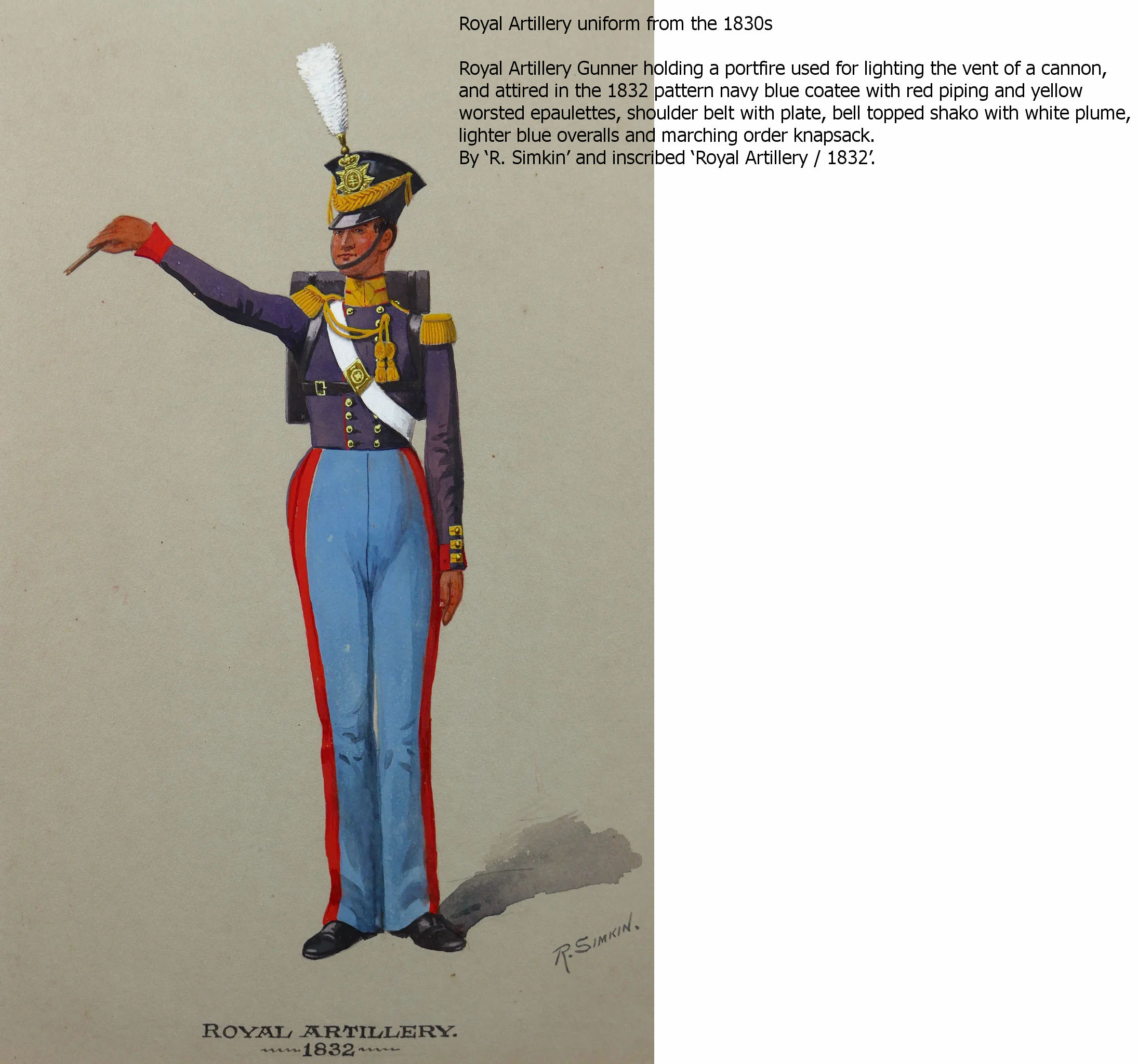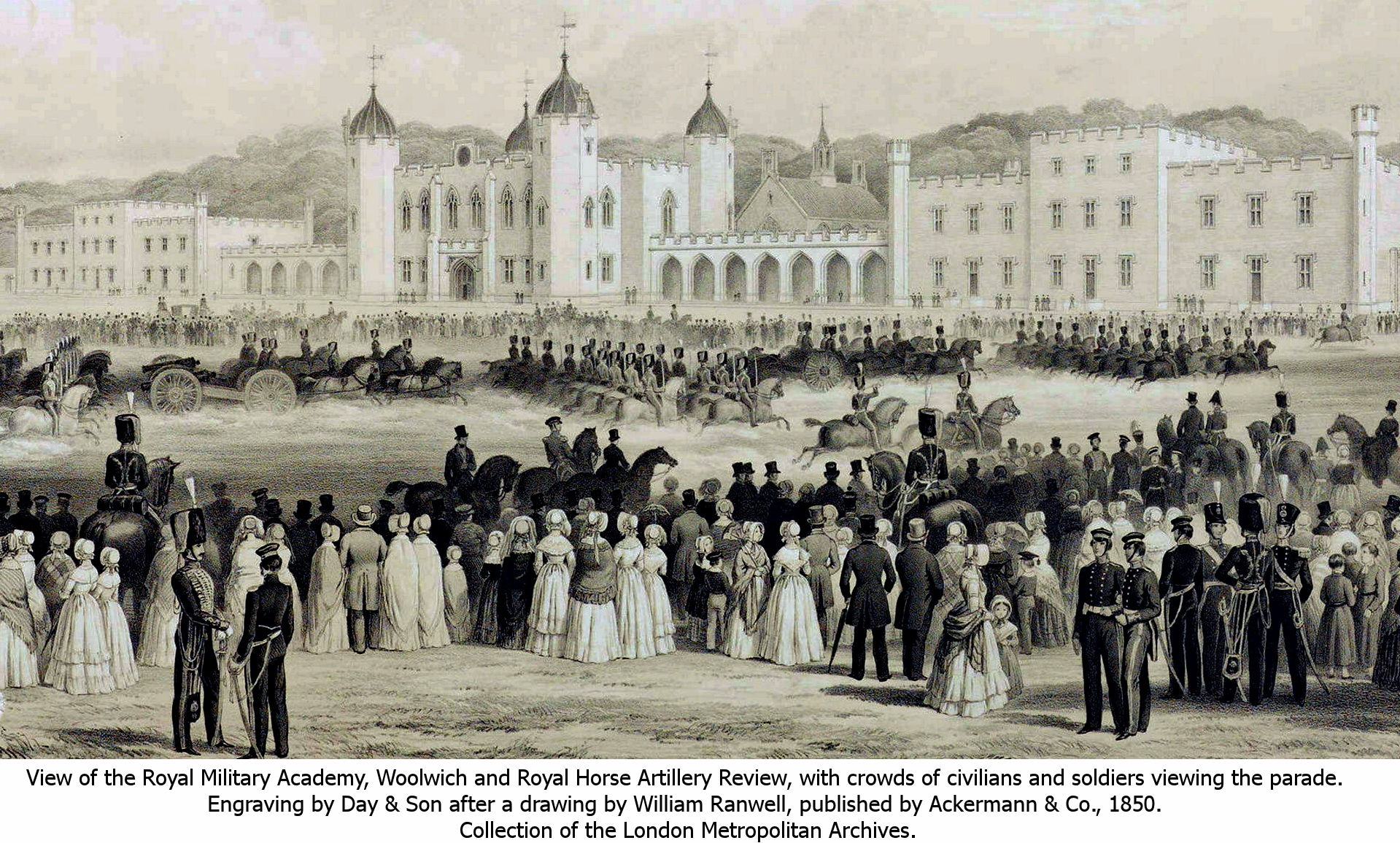
WHEAR |
|
Once upon a time North Hill had a family of clock makers, the Whear family. Their story had been lost in the mists of time but thanks to Rob Warren we now know a little more about them. If you can add to this story please get in touch, especially if you have a clock made by a member of the Whear family.
The Clocks Rob wrote to us in June 2024 "I have owned a long-case clock, made by Thomas Whear of Northill, for many years but, until very recently, I believed that it came from Northill, Bedfordshire. I was trying to find more details on Thomas Whear when I came to realise that it was more likely that the clock came from Cornwall". |
||||
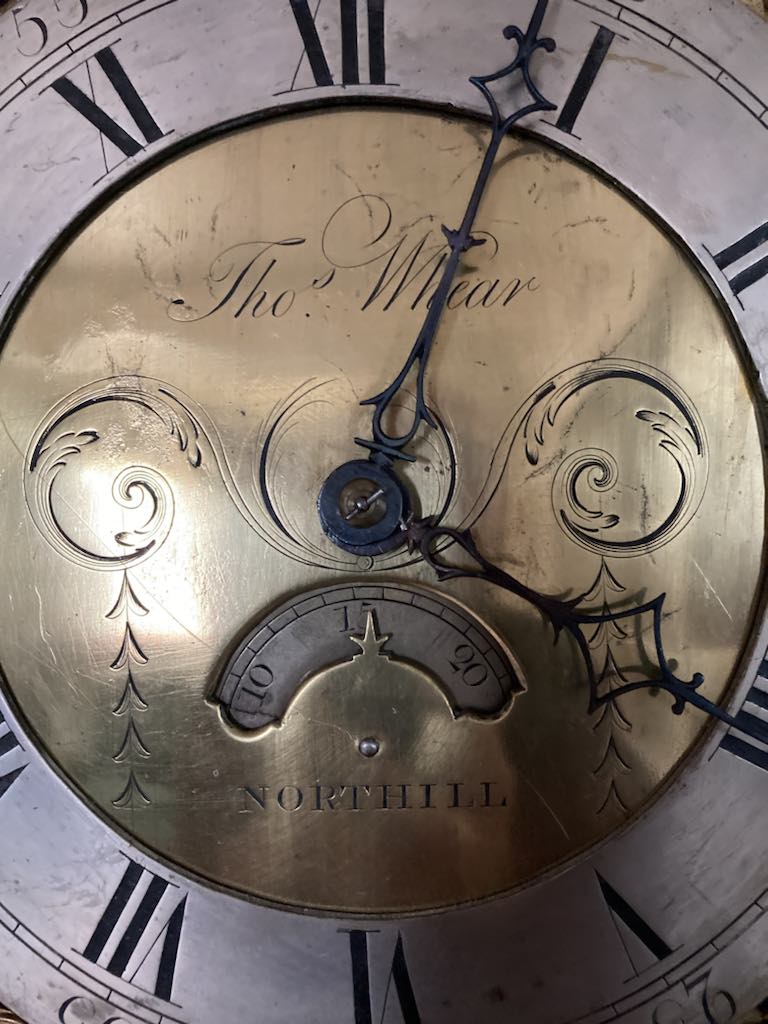 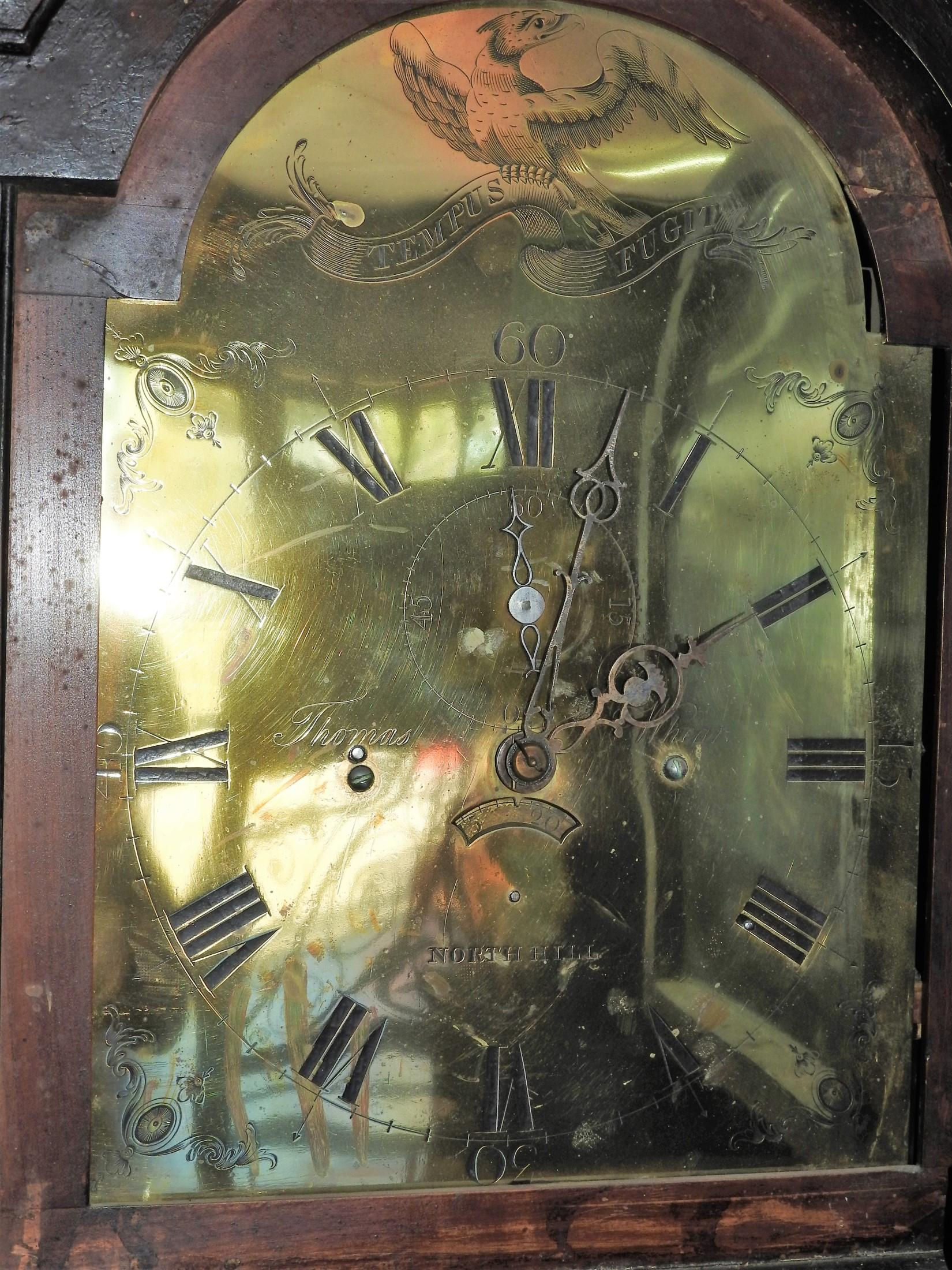
|
||||
|
The clock face on the left is clearly showing that the maker was Thomas Whear and he came from "Northill", this being the usual manner of spelling the parish's name in times past, before spelling was standardized. There is a modern day Northill in Bedfordshire and so it's easy to see why Rob had not realized that the maker was from North Hill, here in Cornwall. The clock face on the right is from a second clock and also shows Thomas Whear as the maker but this time his home village is shown with the spelling of "North Hill". This second image was taken from an Australian auction house site from which this second clock was sold in 2020 as part of the Estate of Elizabeth Huxtable of Queensland. It was only as a result of Rob's enquiry that we searched for other examples and we now have two. Unless you know of any more. Rob has kindly provided these images of his clock which he purchased many years ago, the advice from the dealer being that it was a “cottage clock” (implying a rather basic construction) and that it dated from around 1780: |
||||
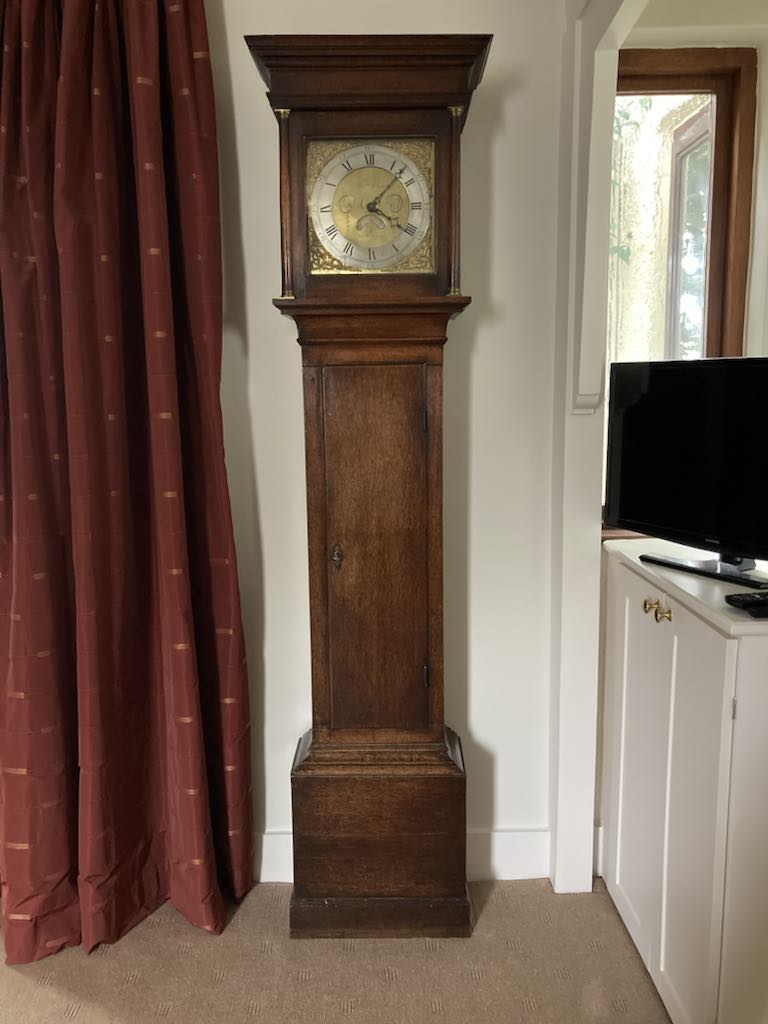 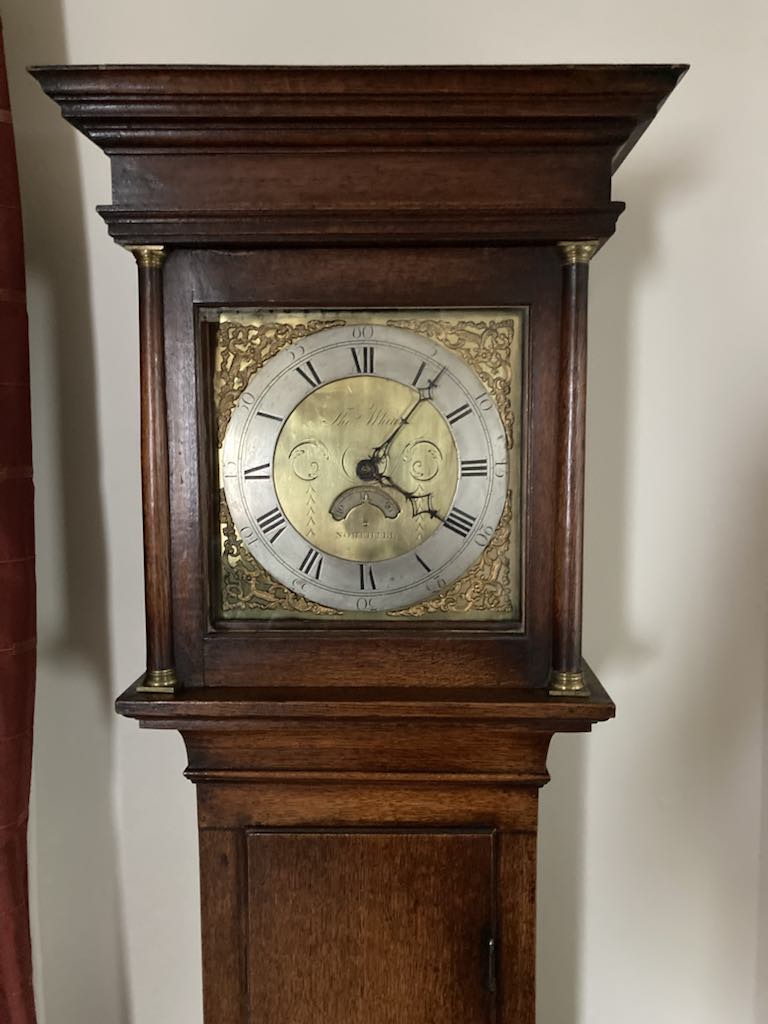 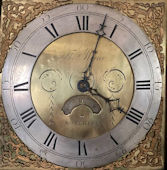
|
||||
The next set of images are from the auction site where the second clock was described as "A 19th Century Thomas Whear Longcase Clock - English. This clock has the Brass face with maker Thomas Whear and North Hill etched on it, along with "Tempus Fugit" (Time Flies). It is a mahogany casing, has all the workings, chain, hand cast weights and original pendulum. Casing is in good general condition but could do with some light restoration. A Good Project investment piece, from the Elizabeth Huxtable Estate. It measures 210cm high by 50cm wide": |
||||
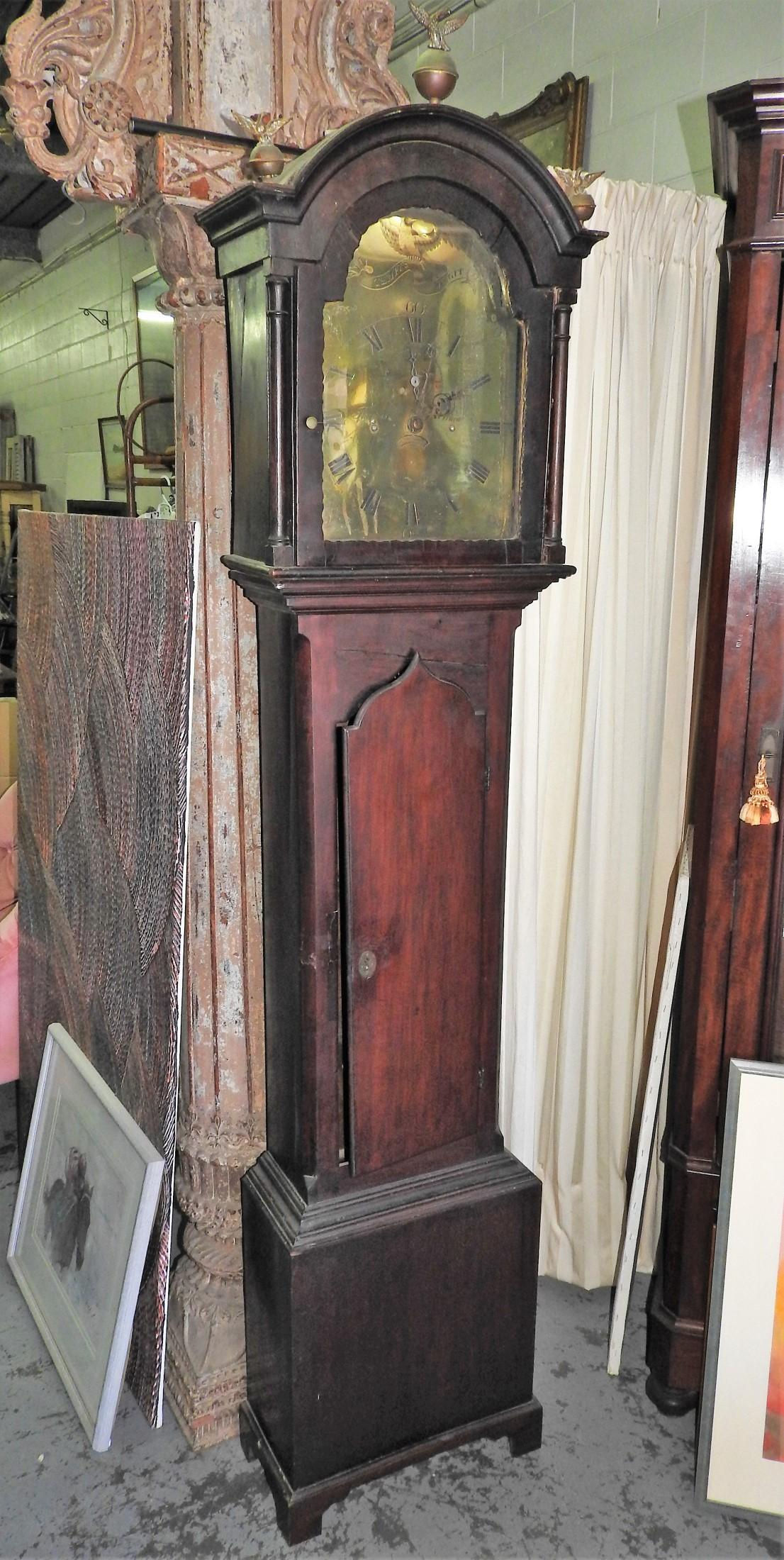 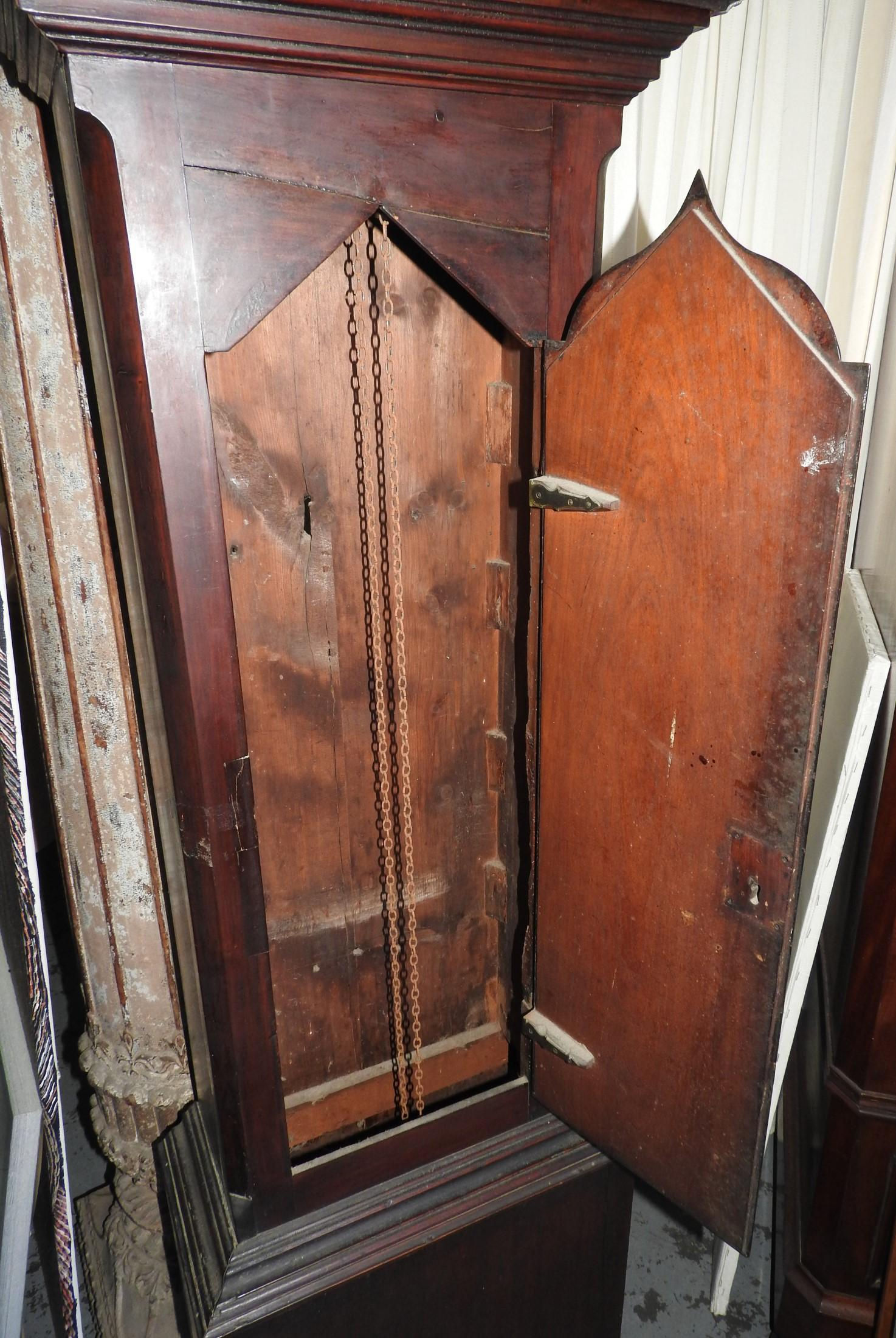 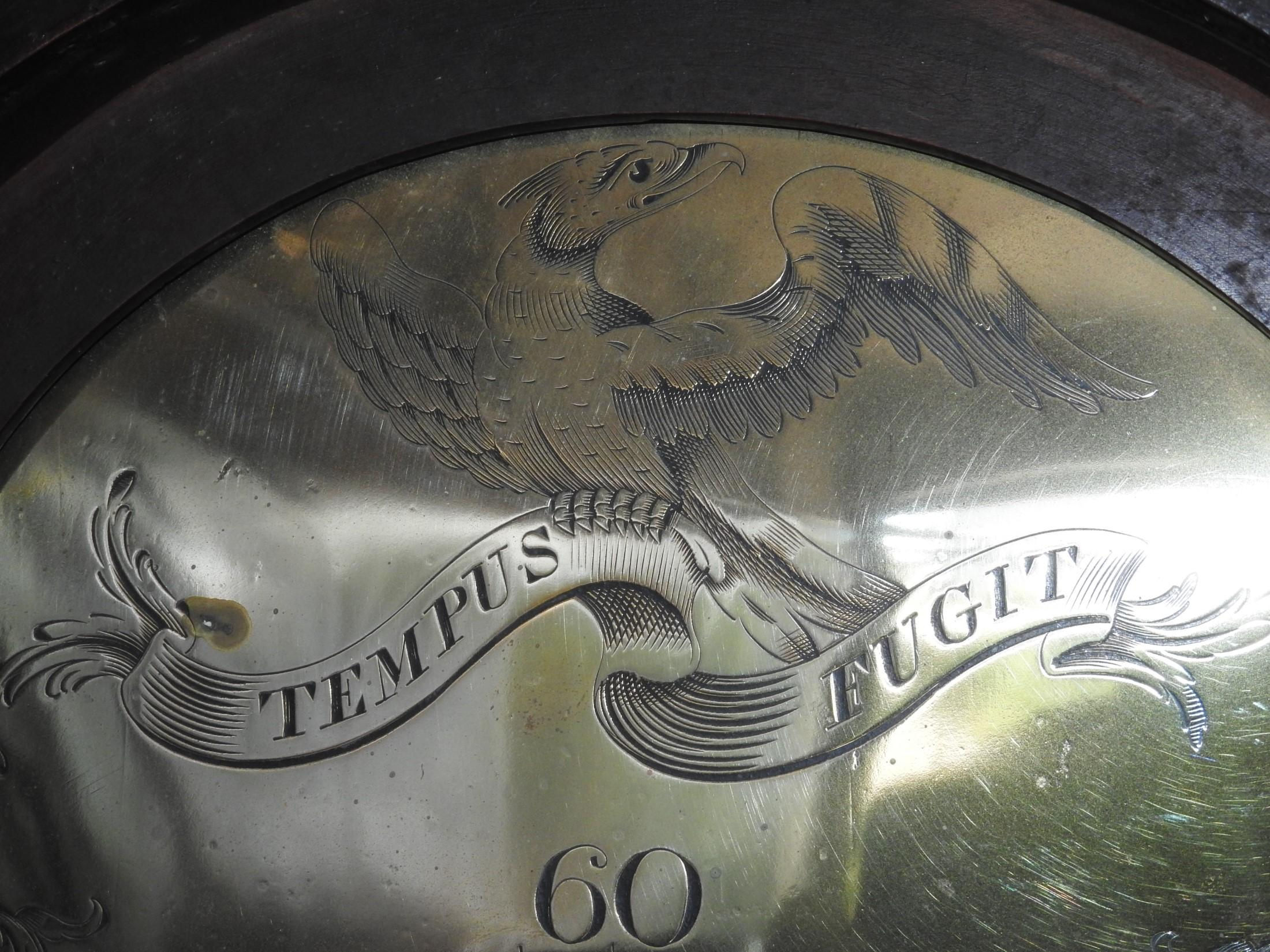
|
||||
|
The Whear Family |
||||
|
The scarcity of evidential records is responsible for some uncertainty about the family but the least worst interpretation of what we do have is outlined below. The Whear family's origins, before they arrived in North Hill is a mystery. The earliest event we can be certain about is the baptism on the 27th Ocober 1761 in St Torney's of Thomas Whear, the son of George and Ruth Whear. It is likely that George and Ruth married in St Kew in 1746 but there is no record of a child from this marriage for 15 years which seems a long time to wait for a first child. It is possible that George's occupation took him to places beyond Cornwall where the records are less comprehensive and it may be for that reason we are not aware of any siblings for Thomas. There are Whear families in the west of Cornwall, notably around Phillack and Redruth, and in Kilkhampton but no evidence has been found to link George to any of them. |
||||

|
||||
|
George was probably about 50 years old when he died, and was buried at St Torney's in 1777. It is possible that Thomas had been taught some of his father's occupational skills as was customary, but there is nothing to tell us what that occupation was. Thomas was not yet sixteen when his father died. He continued to live with Ruth, his mother, until the eventful year of 1795. At the end of March in that year Thomas, a mason aged 33, married Philippa Hewitt in St Torney's; he returned to the church just two months later for his mother's burial, when she was about 70 years of age.
Working in stone whilst also constructing intricate clock mechanisms in hardwood cases is an unusual mix of skills but not impossible to imagine. The work of a mason was itinerant and he could be away from home for weeks or months depending upon the project in hand. When work was not available Thomas, or if Thomas only accepted work close to home, could have been building clocks in his own workshop. This would probably date the clocks closer to 1790 or 1800 rather than 1780, given that Thomas was not yet 20 years old in 1780. It has not been possible to identify where Wheal Mundic was in the parish. Do you know where Wheal Mundic was? Teenagers at the time were commonly apprenticed to a master to learn the master's trade. To acquire the skills to work stone, wood and metal at this young age would not be usual. Another unusual aspect of this scenario is the amount of investment involved in running a clock making business, particularly in a reasonably isolated part of Cornwall. Parts for the clock mechanisms and hardwoods for the clock cases would need to be sourced and could be costly. This would mean that a significant slice of the family's wealth would be tied up until a clock could be sold. Selling a long case clock from North Hill would also have been a challenge, unless it was individually commissioned. No articles or advertisements in any newspapers have been found telling readers about the Whear clock making business of North Hill. Of Thomas & Phillipa's five children, four survived into adulthood and married. Their first born child, Henry, was privately baptised on the 23rd January 1796 and buried in St Torney's on the 7th February, just two weeks later. It is likely that the baptism was not conducted by a priest but by the village 'midwife' at the time of the birth, being aware that Henry was a sickly child and may not survive to receive a public baptism in church. The birth and private baptism was reported to the rector who duly entered the event into the parish register. In the event of Henry's death it was permissible for him to be buried in consecrated ground as he had had a baptism of sorts. Commonly the village 'midwife' would also lay out the dead before burial and she may well have been responsible for dealing with Henry's body before interment. The second and third children were daughters Mary and Ruth. Mary was born in 1798, married John Taylor in 1820 and died in 1824 without having any children. Ruth was born in 1801 and remained unmarried until 1840 when, probably as one of the servants at Trebartha Hall, she married the butler, John Couch. The marriage certificate below shows that John was a widower and Ruth's father had been a clock maker. The marriage lasted a little over nine years until Ruth's death in 1849; no children came from this marriage either. The fourth and fifth children were boys, George was born in 1804 and Thomas was born in 1807; both later married and each had a child born in North Hill. Philippa died in 1812 and Thomas in 1834. The reasonably elaborate headstone on their grave still stands in St Torney's Churchyard. It raises an interesting question of who paid for it and how could they afford it? |
||||
|
||||
|
George Whear (1804-1875) After his baptism in 1804, the earliest record upon which George features is as a witness to his brother's marriage in 1835 in St Torney's although there is a suggestion from 1858 that he may have been brought up before the local magistrate for vagrancy, for the first time, around the time of this wedding. In 1841 George is shown as a clockmaker aged between 35 and 39, and living in Wayland Cot on the main road through the parish that runs from Launceston to Liskeard. Close to the crossroads that leads to North Hill Churchtown was the poor house for the parish and Wayland Cot formed part of accommodation for those on poor relief in the parish. George would appear to have been on hard times. As the eldest son he would probably have inherited his father's business in 1834 but whether this was a thriving concern is not known. The inference from the 1841 census entry is that this was no longer the case. By 1851 he was then living at Slippera (now Slipper Hill) on the boundary of the parish. He was unmarried, aged 47, born in North Hill and by occupation a "clock & watch cleaner, granite cutter & miller". This is the mix of skills that seemed unlikely for his father to have had but George had them too. His business acumen may not have been as sharp as his father's and so far no evidence of any surviving clocks made by him have been found. Slippera is just beyond the southern edge of Lewannick parish. The parish adjacent to Lewannick in the north is South Petherwin and it was from here that George's wife hailed. He married single mother, Mary Ann Deacon, in the summer of 1852 when he was 48 years old and Mary was 40. She brought a daughter, Mary Jane Deacon (born earlier in 1852), to the marriage but it is not known whether George was the father. Almost immediately after the marriage George was admitted to the workhouse in Launceston. It was mentioned above that in 1858 George Whear was charged with "Wandering and Begging at North Hill". Once again Francis Rodd was on the bench and sentenced George to one month's hard labour, also in Bodmin Gaol. His admission description at the gaol shows the hard life he had been living - "a clock maker; age 54, height 5'6", eyes blue, hair brown & grey, complexion sallow, visage long, can read & write imperfectly, married 1 Child, two scars on forehead, lost 4 upper front teeth, fingers crooked". By 1861 he was back in Slippera with Mary, his wife, and Mary his daughter, aged 9. Mary had adopted George's surname and dropped Deacon. George was still described as a watch and clock maker but it is likely that his "crooked fingers" were now making any reasonably remunerative work quite difficult. The 1871 census shows George (67) and Mary (56) in the poor house in North Hill; both were described as paupers. Their daughter Mary Jane (19) was a servant in the family home of Thomas Retallack, a farmer in Linkinhorne. George died in 1875 and was buried in St Torney's churchyard, followed by his wife 13 years later. |
||||
|
Thomas Whear (1807-1870) This biography of Thomas Whear has been researched and compiled by Thomas and Philippa Whear’s youngest son, Thomas, was baptised in North Hill on 19 April 1807. His father’s occupation was recorded as Mason and the family was living in Wheal Mundic.
Little information is available on his early life but, apart from an older brother, Henry who died in infancy, Thomas had two older sisters, Mary (1798-1824) and Ruth (1801-1849), and an older brother, George (1804-1875). Sadly, the children lost their mother, Philippa, when Thomas was only five years old and she was buried in St Torney churchyard on 11 November 1812. Despite having a young family, there is no record of their father remarrying. Thomas’ eldest sister, Mary, married in 1820 but tragically died childless, in 1824. In 1834, Thomas, the father of Ruth, George and Thomas, died aged 73. He was buried in St Torney churchyard on 19 Aug 1834. At that time, the family were living in Trebartha Village, North Hill. Shortly after his father’s death, on 20 January 1835, Thomas married Annabella Jenkins. The marriage seems to be one in which Thomas had little interest but this could just be conjecture. At the time of her wedding to Thomas, Annabella already had a child, Francis Jenkins, born in 1829 by an unnamed father. Thomas and Annabella also had a son, Thomas, baptised in North Hill on 8 March 1835. There is no record of his date of birth but at the time of his baptism his father’s occupation is recorded as Watchmaker and the family were living at Congdon’s Shop, the household of Annabella’s parents, Charles and Mary Ann Jenkins. Four weeks after their wedding and three weeks before the baptism of their son, Thomas, on 16 February 1835, Thomas attested as 1036, Gunner & Driver in the 5th Battalion Royal Artillery. The attestation was in Devonport and his trade was recorded as Watch & Clockmaker. By the time of his discharge, on 23 Dec 1856, Thomas had served nearly 22 years with the Regiment, over 9 of which were in Malta.
The 1841 Census records Annabella and son Thomas living at Congdon’s Shop, North Hill, as were her parents and six siblings. Back in 1838, Annabella’s sister, Catherine, had married John Blake, a Private in the Royal Marines. At that time, Catherine and John were living in East Stonehouse, Devon. In 1841, Catherine and her son, Christopher, were still living in East Stonehouse, in Union Street. Annabella’s father died in East Stonehouse in November 1844 and Annabella was present at the death. Annabella, “wife of Thomas Whear, Soldier”, died of tuberculosis at Pound Street, East Stonehouse on 5 May 1847, at the age of 33. The 1851 Census records Catherine (Jenkins) Blake lodging in Edgcumbe Street, East Stonehouse, together with nephew, Thomas Whear (age 15) and son John (age 10). Her son, Christopher, had died in 1842. Thomas, in 1851, appears as a patient in the Royal Artillery Hospital at the Woolwich Arsenal in Kent; at this time it was known as the Royal Ordnance Hospital. He was still a Gunner & Driver, 5th Battalion Royal Artillery and was listed as “Unmarried”. There are no details on the cause of his hospitalisation.
Thomas was discharged from the Royal Artillery on 23 December 1856. He was regarded as “unfit for further service” due to Rheumatism “caused by Military Service” and qualified as a Chelsea out-Pensioner. From 30 Dec 1856, Thomas’ pension was paid in Plymouth but, from 1 December 1860 until 31 December 1862 it was transferred to Jersey. The 1861 Census records Thomas living in Trinity Road, St Helier, Jersey. He was “unmarried”, a Chelsea Pensioner and a lodger in the household of John and Catherine Blake, the brother-in-law and sister of his late wife, Annabella. John Blake was a Greenwich Pensioner. Thomas’ pension was transferred back to Plymouth on 1 January 1863, where Thomas died on 12 November 1870. He was buried in Stoke Damerel on 15 Nov 1870, aged 63.
|
The images at the top of the page show the clock face from Rob Warren's clock and the 1841 census of North Hill entry showing George Whear aged 35, living at Wayland Cot in North Hill, a clockmaker and born in Cornwall. |

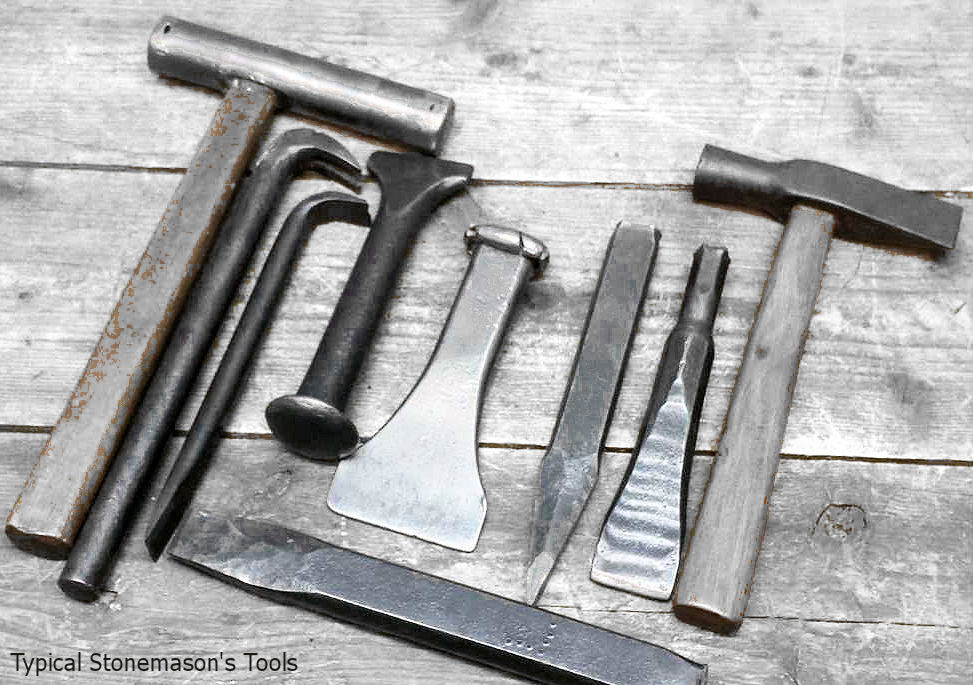 The parish records of the baptisms of Thomas and Philippa's five children, born between 1796 and 1807, show that the family lived at Wheal Mundic in North Hill parish and that Thomas was a mason, working in stone. On the basis that the two clocks have been dated as "about 1780" and as "19th century" then he was also a clock maker, working in wood and metal. The evidence that exists to show that Thomas Whear of North Hill was a clock maker is his name on the dials of the two clocks shown above and on the marriage certificate of his daughter, Ruth, in 1840 (shown below). The marriage took place six years after Thomas' death.
The parish records of the baptisms of Thomas and Philippa's five children, born between 1796 and 1807, show that the family lived at Wheal Mundic in North Hill parish and that Thomas was a mason, working in stone. On the basis that the two clocks have been dated as "about 1780" and as "19th century" then he was also a clock maker, working in wood and metal. The evidence that exists to show that Thomas Whear of North Hill was a clock maker is his name on the dials of the two clocks shown above and on the marriage certificate of his daughter, Ruth, in 1840 (shown below). The marriage took place six years after Thomas' death.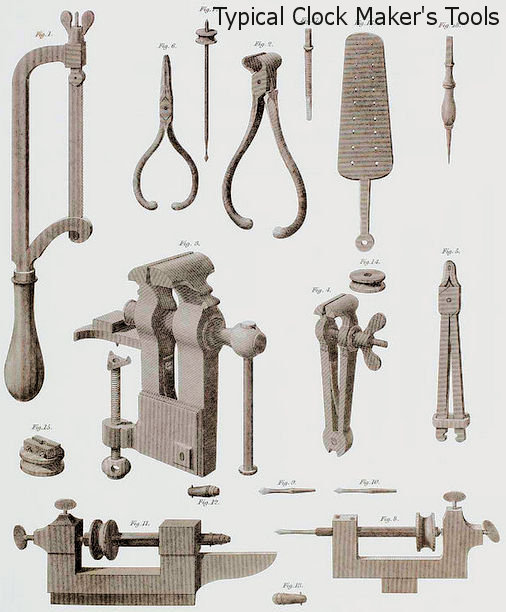

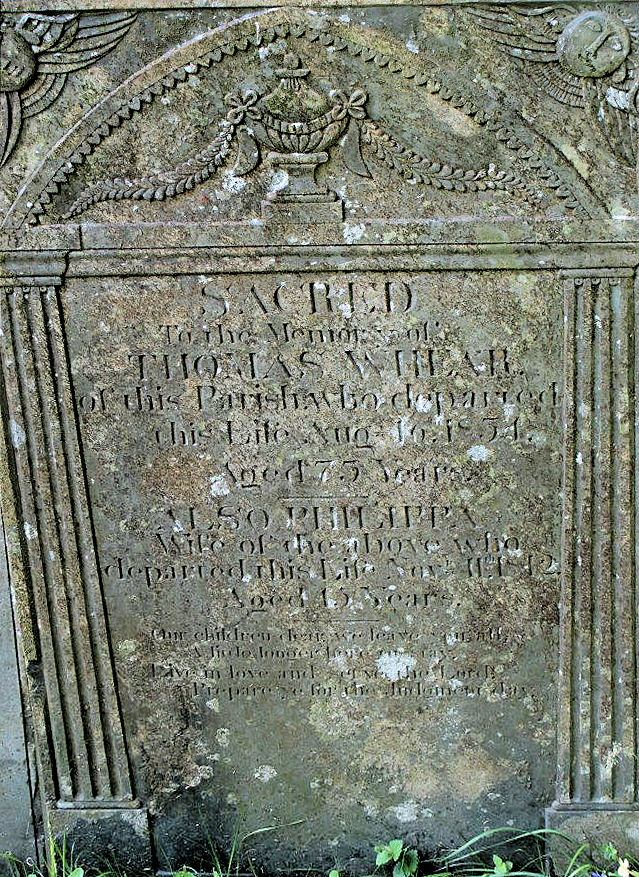
 This institution had accommodated Mary Ann Deacon some years earlier when she was just 17 years old. Whilst in the workhouse she had been "idle, disorderly and neglecting herself". Brought up in front of the local magistrate, Francis Rodd of Trebartha Hall, he sentenced Mary to one month's hard labour in the gaol at Bodmin where it is reported that she behaved herself. She was "short, had grey eyes, brown hair and a fresh complexion and could read".
This institution had accommodated Mary Ann Deacon some years earlier when she was just 17 years old. Whilst in the workhouse she had been "idle, disorderly and neglecting herself". Brought up in front of the local magistrate, Francis Rodd of Trebartha Hall, he sentenced Mary to one month's hard labour in the gaol at Bodmin where it is reported that she behaved herself. She was "short, had grey eyes, brown hair and a fresh complexion and could read".
